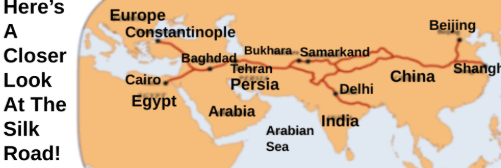School Report: The Ottoman Empire
A Legacy of Islamic Power and Spiritual Guardianship
4/18/20255 min read


بِسْمِ ٱللَّٰهِ ٱلرَّحْمَٰنِ ٱلرَّحِيمِ
After our trip to Istanbul, my son wrote a report for school on the Ottoman Empire, inspired by our visit. We turned it into a post here where we look into the rise, expansion, and spiritual legacy of the Ottomans—perfect for young Muslim readers curious about history or seeking to reconnect with Islamic heritage.
The Ottoman Empire was one of the most powerful and influential Muslim empires in history, lasting over 600 years. Centered in what is now modern-day Turkey, the empire grew through trade, warfare, and diplomacy, dominating large parts of Europe, Asia, and Africa. Its legacy continues to shape the Muslim world today.
Origins: From Osman to Empire
The Ottoman Empire traces its roots to the late 13th century, during a time of chaos and change in the Middle East. The region around Anatolia (modern Turkey) was ruled by the Byzantine Empire, a Christian empire that represented the last remnants of the famous Roman Empire.
However, the Byzantines were in decline, having lost much of their territory to invading Turkic tribes from Central Asia. Among these tribes was a Muslim warrior named Osman, the founder of what would later become the Ottoman Empire. The name “Ottoman” comes from the Arabic version of Osman: Uthman.
Osman and his descendants began conquering Byzantine lands. Over the next two centuries, the Ottomans gradually pushed the Byzantines into a final stronghold—the ancient walled city of Constantinople.
The Fall of Constantinople: A Turning Point in Islamic History
In 1453, under the leadership of Sultan Mehmed II (Mehmed the Conqueror), the Ottomans finally captured Constantinople. This victory marked the end of the Byzantine Empire and the beginning of a new era of Islamic dominance in the region.
The city was renamed Istanbul, and it became the new capital of the Ottoman Empire. It was strategically located at the western edge of the Silk Road, the ancient trade route connecting Asia and Europe. The Ottomans controlled and taxed trade along this route, generating vast wealth.
This newfound prosperity helped fund monumental architecture, religious institutions, and the expansion of Islam throughout the empire. The Ottomans saw themselves not just as rulers but as defenders and promoters of Islam.
The Golden Age: Sultan Suleiman the Magnificent
The empire reached its height during the 16th century under Sultan Suleiman the Magnificent, also known as Suleiman al-Qanuni (The Lawgiver). His reign marked a golden age of:
Territorial expansion, with conquests across North Africa, Eastern Europe, and the Middle East.
Architectural achievements, such as the construction of majestic mosques and palaces.
Islamic scholarship, as madrasas and scholars flourished under state patronage.
Legal reform, as Suleiman codified Islamic law and strengthened governance.
He also secured the Hejaz region, which includes Makkah and Madinah, placing the two holiest sites in Islam under Ottoman protection—a responsibility taken with immense seriousness.
Military Might: The Turkoman Horses and Strategic Sea Routes
The Ottomans were not only spiritual stewards—they were formidable military tacticians. One lesser-known aspect of their military success was their use of Turkoman horses. These extinct horses were prized for their stamina, speed, and loyalty in battle. They gave Ottoman cavalry units a powerful edge during expansive campaigns across Europe and Asia.
Moreover, the Ottomans maintained control of major sea routes, allowing them to dominate maritime trade and military movements. Their naval strength extended from the Black Sea to the Mediterranean, securing trade lines and defending Muslim pilgrims from piracy.
The Ottomans’ strategic hold over key ports meant they could facilitate and safeguard Islamic scholarship, goods, and pilgrims, reinforcing their status as the central Islamic power of the era.
The Long Decline: Shifting Power in Europe
Starting in the 1600s, the Ottoman Empire began to lose its dominance. While Europe was advancing through the Renaissance and later the Industrial Revolution, the Ottomans remained largely unchanged in their military and economic systems.
Several key factors led to their decline:
New sea trade routes allowed Europeans to bypass the Silk Road, cutting into Ottoman tax revenue.
Technological stagnation, especially in warfare, compared to rapidly industrializing Europe.
Nationalist movements, where different ethnic groups within the empire began seeking independence.
Rebellions and European pressure forced the Ottomans to cede territory over the centuries. Though slow, the decline was steady and unstoppable.
World War I: The Final Blow
In the early 20th century, the Ottoman Empire formed an alliance with Germany and joined the Central Powers during World War I. Opposing them were the Allied Powers, including Britain, France, Russia, and later the United States.
According to the Imperial War Museums, the majority of nations sided with the Allies. The Ottomans, having failed to modernize, struggled in this first fully mechanized war. Their outdated military, lack of industrial infrastructure, and internal instability contributed to their defeat.
After the war, the Ottoman Empire lost almost all its remaining territory. What was once a vast and powerful Islamic empire had been reduced to a shell of its former self.
The Birth of Modern Turkey
The final chapter of the Ottoman story came in 1922, when a Turkish nationalist movement led by Mustafa Kemal Atatürk officially abolished the empire. In its place, the Republic of Turkey was established in 1923, with Atatürk becoming the first president.
Though he introduced harsh secular reforms, the cultural and architectural legacy of the Ottomans remained. Many historic mosques and monuments, including the Hagia Sophia, still stand today.
Originally a Byzantine church built between 532 and 537 CE, the Hagia Sophia was converted into a mosque by the Ottomans in 1453. In 1934, Atatürk transformed it into a museum, but in 2020, it was reconverted into a mosque, reconnecting the building to its Ottoman-Islamic heritage.
The story of the Ottoman Empire is one of rise, glory, and eventual decline—but its legacy endures in the hearts of Muslims today.
Nomad Links
Flights: Google Flights
Stays: Trip.com
VPN Routers: GL.iNet GL-MT6000 - GL.iNet GL-AXT1800 - Tenda AX3000 WiFi Router
VPN Services: SurfShark, NordVPN
Temu: Temu App Download
Esim: AloSIM
Airport Transfers: Trip.com
Car Rental: Qeeq.com
Full Product Recommendation Page
Please see our list of blogs to learn more, and you can contact us directly at muslimfamilynomad@gmail.com for any questions and even set up a consultation.
** Disclaimer: We are compensated for some of the links provided in this article if you purchase something, but we only recommend what we have used and found successful or we have done some research to find. This blog should not be used as financial advice and we are not travel agents, we are just letting you know our opinions from real life experience. May Allah bless you and your family on your travels!






Muslim Family Nomad
Discover tips for Muslim-friendly travel experiences.
Stay in Contact
© 2025. All rights reserved.
